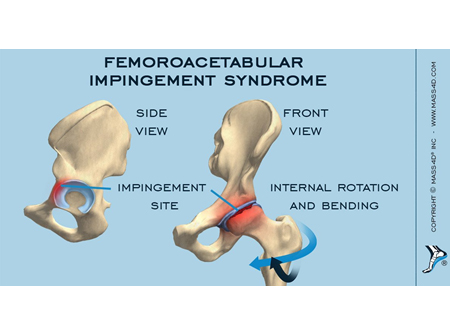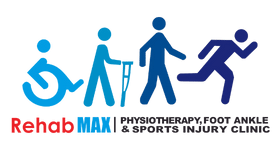HIP IMPINGEMENT

The incidence of hip impingement in patients with groin pain is 0.44% in the entire population.
Hip impingement in medical terms is known as Femoroacetabular impingement (FAI), is a condition in which the anatomic abnormalities of the femoral head and/or the acetabulum result in abnormal contact between the two during hip motion, especially in positions of hip flexion and rotation, leading to cartilage and labral damage and hip pain. This results in increased friction during hip movements that may damage the joint.
Symptoms:
- Stiffness in the groin or front of the thigh and/or a loss of your hip’s full range of motion.
- Many athletes often describe pain in the groin with deep flexion or rotation of the hip during activity
- Occasionally, a popping or clicking in the front of the hip
- Pain may also radiate along the side of the thigh and in the buttocks. It is important to rule out other causes of pain in this area which may originate in the low back or abdomen
- As the condition progresses, pain with more subtle activities, such as sitting for a long time or walking up a hill
- Night pain or when walking on the flat ground suggests that the cartilage cushioning the ball and socket has begun to break down and wear away, a condition known as Osteoarthritis (OA)
Treatment
- Patient education to avoid pivoting motions, especially under load, since the acetabulum rotates on a loaded femur, thus increasing force across the labrum.
- Advising modification of functional activities and counseling on joint protection strategies and avoidance of symptom-provoking activities to prevent further damage
- Manual therapy such as hip joint mobilization for capsular restrictions while avoiding end-range flexion and internal rotation
- Exercises and activities including stretching of tight hip muscles and strengthening of core, hip, and leg muscles (based on any observed asymmetry in rotation), in order to improve range of motion at the hip joint and strength
- Neuromuscular re-education that focuses on multi-joint patterns to improve movement coordination
- In case of a sportsman, then progression to sports physiotherapy training involving agility and speed training is important for return to play
- When a major damage is involved, surgical intervention needs to be done and post-surgical rehabilitation is necessary.

